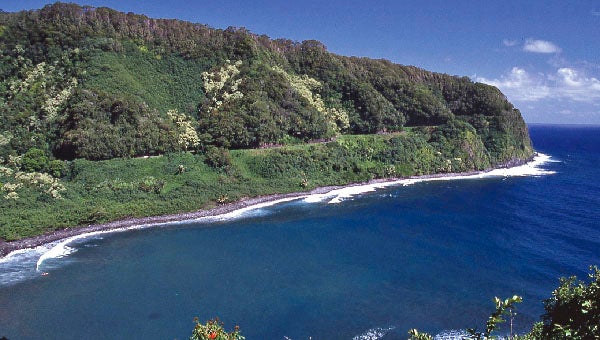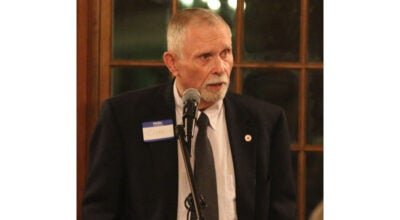Happy Road to Hana
Published 11:01 am Friday, March 11, 2016
by James D. Howell
The road is about 64 miles total, stretching from Kahului on Maui’s north shore past the small, eclectic town of Hana, ending a little past a visitors center at the Seven Pools, a favorite swimming hole of locals and visitors alike. The pools are actually a part of the larger Haleakala National Park. The park is accessed on the opposite side of the mountain. This is a remote area.
The first segment follows the shoreline with surf on the left and sugar cane fields on the right. Sugar cane is harvested differently here. The plant is allowed to grow about two years to maturity. Then the fields being harvested are burned to remove the leaves, and the whole plant is dug up for transport to the mill for processing. Smoke in the fields is very normal for Maui; a schedule is even published.
Most of the cane fields visible are part of the 36,000-acre Hawaii Commercial and Sugar Company plantation. The fields use modern drip irrigation, fed by an extensive canal and viaduct system to move water from the rainy side of the mountains.
The irrigation systems were instituted long years ago to provide a continuous reliable water source. Sugar cane, as well as other locally grown products would not be possible without it.
I drive past Paia, the last source of fuel until Hana. I’m told that the smoky haze around Paia is not from burning sugar cane foliage, but from another, non tobacco, smoking product. I don’t see a haze this morning; it must be too early for that recreation.
Past Paia, the road begins gentle turns, following the foothills of Haleakala volcano. The upsweep from ocean level is clearly visible. A couple of miles into this segment, I see an opening to the ocean on the left and can make out wind surfers, catching waves at a beach . The sign says Ho’okipa. I turn into a parking lot and take a few pictures, making a mental note to stop here on the way back for a little closer look. A few surfers are out, but the day is young and the winds will increase through the afternoon.
The road to Hana was originally built by convict labor around 1900. No one considered what the attraction would become. Hana was a sugar town with a mill. The mill is no longer in use and most of the population moved away to more accessible towns closer to Kahului.
The town clung to life and today is a laid back Mecca, with shops and eateries and other assorted tourist attractions. Access is mostly by road.
About five miles beyond Ho’okipa, the road splits off to the left and becomes SH360. Most travel guides put the number of curves on the whole highway at about 600 and the bridges at 59. Half the bridges are one lane. This trip requires attention to the road and traffic at all times. Fortunately, those who have gone before have left many lay bys and pull off spaces to stop, get out and enjoy the view. The occasional local loco driver is expected. They know the road and will come roaring by. It’s easy to accommodate their haste, and bad manners not to. I accommodate.
I stop for the short hike to Twin Falls. I see patches of Taro, the base of poi, alongside the road. Gardens of tropical plants for commercial and personal use are numerous. I stop frequently at lay bys and check out the magnificent views.
At one narrow bridge, there’s sizable parking area, with locals selling hats and baskets made from local plants. At this same bridge, divers do somersaults from the bridge railings into a deeper pool some 20 feet below.
Not having time to spare, I bypass Hana Town and continue to the visitors center at Seven Pools. This is a very popular swimming place. I walk the rocks and enjoy the clear, cool rain water flowing from way up the Haleakala volcano. It’s a fitting turnaround point, some three and a half hours from my beginning. It’s time for the somewhat faster return trip.
I pull into the entry to Ho’okipa Beach and park behind a VW bus that is obviously being used as a temporary (maybe) residence. Other vehicles are parked at random; a few spectators stare outward.
The surfers dance with the wind atop and before regular waves from the north. The angle is enough to keep them away from a rocky area next to the headland; only the experienced or daring ride this bay.
Time after time, I see long runs before the wind across and over whitecaps. It’s thrilling to watch. I don’t think I’ll try it.
Content with the day’s adventure, I return to Kahului.
JAMES D. “ARCHIE” HOWELL is a Southampton County native and 1955 graduate of Franklin High School. He can be reached at archiepix@kingwoodcable.com.











